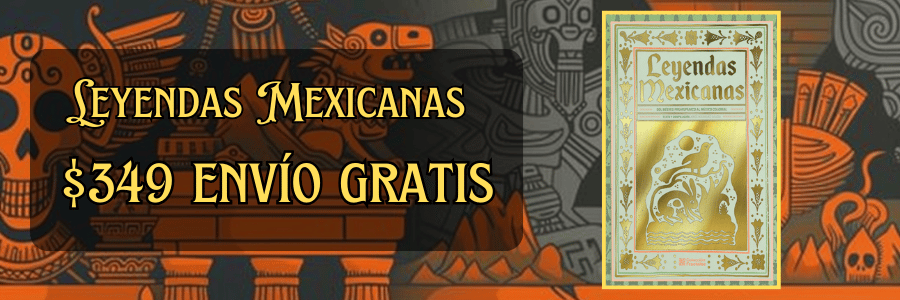The Influence of the Maya on the Aztec and Other Civilizations
The pre-Columbian civilizations of Mesoamerica stand as some of the most fascinating and complex societies in world history, with the Maya and Aztec civilizations often depicted as the quintessential examples of advanced cultures in the region. While the Aztecs rose to prominence after the decline of the Maya civilization, the influence of the Maya on the Aztecs and other civilizations was profound and multifaceted. This influence can be seen through various domains, including writing, mathematics, astronomy, agriculture, art, and social and political structures. Understanding this influence not only illuminates the interconnectedness of Mesoamerican cultures but also provides insight into the legacy of these civilizations that resonates through history.
The Maya civilization, flourishing from around 2000 BC until the arrival of the Spanish conquistadors in the 16th century, was marked by remarkable advancements in various fields. The Maya developed a complex writing system, known as hieroglyphics, which remains one of the most sophisticated systems of written communication in pre-Columbian America. Their writing was not only a mode of communication but also a means of recording historical events, religious texts, and astronomical records. The script included logograms and syllabic glyphs that conveyed information concisely and richly. The inheritance of this writing tradition found an echo in the cultures that followed, most notably among the Aztecs. While the Aztecs developed their own system, the stature and prestige of the Maya writing system served as a significant reference point for the Aztecs in the construction of their own ideograms and pictorial symbols.
Mathematics was another arena in which the Maya excelled, particularly distinguished by their use of the vigesimal (base-20) counting system and the concept of zero, which was revolutionary for the time. This mathematical framework enabled the Maya to create complex calendars, notably the Tzolk’in and the Haab’ systems, which became crucial for agricultural and religious practices. The significance of the Mayan contributions to mathematics and calendrical systems significantly influenced the Aztecs, who adapted these methods for their own societal needs. The Aztecs recognized the importance of timekeeping for agricultural planning and religious ceremonies and thus incorporated many Mayan calendrical concepts into their practices, demonstrating a continuity of knowledge and cultural exchange between these two eminent civilizations.
Astronomy was also a critical field where the Maya’s contributions were significant. Their detailed understanding of celestial movements allowed them to create highly accurate astronomical tables that predicted eclipses, solstices, and the cycles of celestial bodies. This deep astronomical knowledge was not limited to the Maya, as the Aztecs adopted and modified many Mayan astronomical concepts in their religious rituals and agricultural cycles. The connection between the heavens and the Aztec worldview showcased the influence of the Mayan astronomical legacy, as both civilizations viewed celestial events as intimately tied to their deities and seasonal agricultural practices.
The centerpiece of Mayan culture and influence lay in its agriculture. The Maya were adept at shifting cultivation and developed advanced techniques such as slash-and-burn agriculture and terracing, which allowed them to cultivate crops like maize, beans, and squash effectively. The agricultural practices of the Maya not only supported a dense population but also influenced the agricultural methods of the Aztecs, who likewise developed sophisticated strategies for maximizing arable land. The chinampa system utilized by the Aztecs, often referred to as "floating gardens," was in essence an evolution of Mesoamerican agricultural techniques with roots in practices established by earlier civilizations, including the Maya. Both civilizations understood the importance of agricultural fertility, and they established agricultural deities and rituals to ensure successful harvests.
The artistic legacy of the Maya is another facet that had a lasting impact on the Aztecs and other Mesoamerican civilizations. The Maya were renowned for their intricate pottery, sculpture, murals, and architecture. Their artistic endeavors were not merely decorative; they served religious, political, and cultural purposes. The symbolism embedded in Maya art often reflected their cosmology and worldviews, which the Aztecs would later similarly adopt and adapt. The influence of Mayan motifs and themes can be seen in Aztec sculpture and temple construction, where symbolic representations of deities, ancestors, and cosmic elements were integral to understanding their universe. This syncretism of artistic values exemplified the transmission of cultural ideologies across time and geography in ancient Mesoamerica.
In addition to artistic and agricultural influences, the political and social structures of the Maya offered a template for the Aztecs and other subsequent cultures. The Maya were organized into independent city-states, each ruled by a king or ahaw, who held both political and spiritual authority. This form of governance may have influenced the Aztecs, who, although mainly organized under a central imperial structure, borrowed elements of the city-state model in their expansion. The Aztec empire was characterized by a tributary system where subdued regions maintained a level of autonomy but contributed resources to the central ruler, echoing the earlier Maya practices of local governance and interregional interactions. The deeply entrenched practices of diplomacy and warfare among the Maya would also inform Aztec diplomacy, where alliances and tributary relationships were crucial for their expansionist policies.
Religion represented another realm where the Maya had a significant influence on the Aztecs and other Mesoamerican cultures. Both civilizations shared a polytheistic belief system that emphasized the importance of rituals, ceremonies, and the interdependence of humans and their deities. The Maya pantheon, which included gods associated with agriculture, rain, and the underworld, informed the religious practices of the Aztecs. For example, agricultural rituals dedicated to Tlaloc, the Aztec god of rain, can be traced back to similar Mayan rituals honoring rain gods. The emphasis on cosmology and the importance of timing in religious events further typified the ceremonial practices of both cultures. Shared mythologies and narrative traditions across these civilizations suggest a complex web of religious influence and adaptation.
The legacy of the Maya did not end with the Aztecs but extended to other cultures across Mesoamerica, including the Mixtecs and Zapotecs of Oaxaca. These groups also drew upon the intellectual, artistic, and cultural innovations of the Maya. For instance, the Mixtecs adopted the Maya writing system to document their history, contributing to the preservation of their own narratives and cultural identity. The confluence of cultural practices across these civilizations culminated in a rich tapestry of heritage that defined the region long after the fall of individual states.
The role of trade routes further amplified the Maya influence across Mesoamerica, enabling the exchange of goods, ideas, and technologies. Trade networks established by the Maya facilitated interactions with distant cultures, including the Aztecs, who would later inherit these trade routes. The interaction through trade not only contributed to economic success but also facilitated cross-cultural exchanges that influenced art, religion, and technology among participating societies. The intricacies of these networks become evident when examining how the goods and practices shared through trade influenced the cultural identities of the civilizations engaged in these exchanges.
The collapse of the Maya civilization around the 9th century AD led to an extensive shift in Mesoamerican dynamics, allowing the Aztec civilization to rise to prominence. However, the remnants of the Maya influence remained profound. Even as the Aztec civilization flourished, they were not isolated but rather part of a broader continuum of cultural tradition in which the Maya legacy persisted. Historical accounts and archaeological evidence suggest that the Aztecs viewed the earlier Maya civilization with a mix of reverence and recognition of its significant achievements, adopting and adapting many elements from it as they established their dominion.
As European colonization loomed, the intricate tapestry of Mesoamerican cultural influences, including those of the Maya, continued to evolve. The presence of Spanish conquistadors interrupted this dynamic, leading to the rapid decline of indigenous societies and their integration into a colonial framework. Nevertheless, the deeper cultural influences and legacies endured, embedded within the practices, languages, and identities of the descendants of these ancient civilizations. Today, the influence of the Maya can be traced in various aspects of contemporary culture across Mexico and Central America, evidencing an enduring legacy that transcended the historical confines of their time.
In conclusion, the influence of the Maya civilization on the Aztec civilization and other Mesoamerican cultures is a testament to the interconnectedness and dynamics of ancient societies. Through advancements in writing, mathematics, astronomy, agricultural practices, art, and political structures, the Maya set a precedent that profoundly shaped the civilizations that followed. The legacy of the Maya persists not only in historical context but also in the cultural identities of contemporary societies, showcasing the enduring impact of these remarkable civilizations. Understanding this profound influence is essential for appreciating the richness of Mesoamerican history and the complexities of cultural evolution that define the region. As we delve deeper into the interplay between these ancient civilizations, we uncover a legacy that reverberates through time, informing our understanding of the past and its relevance to the present.
Explore More:
| How the Mexican Revolution Changed the Role of the Catholic Church |
| Education and Schools in Colonial Mexico |
| Women’s Rights in Mexico: Progress and Struggles After the Revolution |
| How the French Invasion of Mexico Impacted the Mexican Monarchy |
| The Artistic Legacy of Mexico’s Colonial Period: From Paintings to Sculpture |
| The Role of Oil in the Development of Alternative Fuels |
| How Mexican Artists Are Reimagining Their Cultural Roots |
| The Artistic Expression of Mexico’s Indigenous Communities |
| The Role of the Chichimeca in the Silver Mining Boom of Zacatecas |
| The Diplomacy of the French Intervention: Letters and Treaties |



